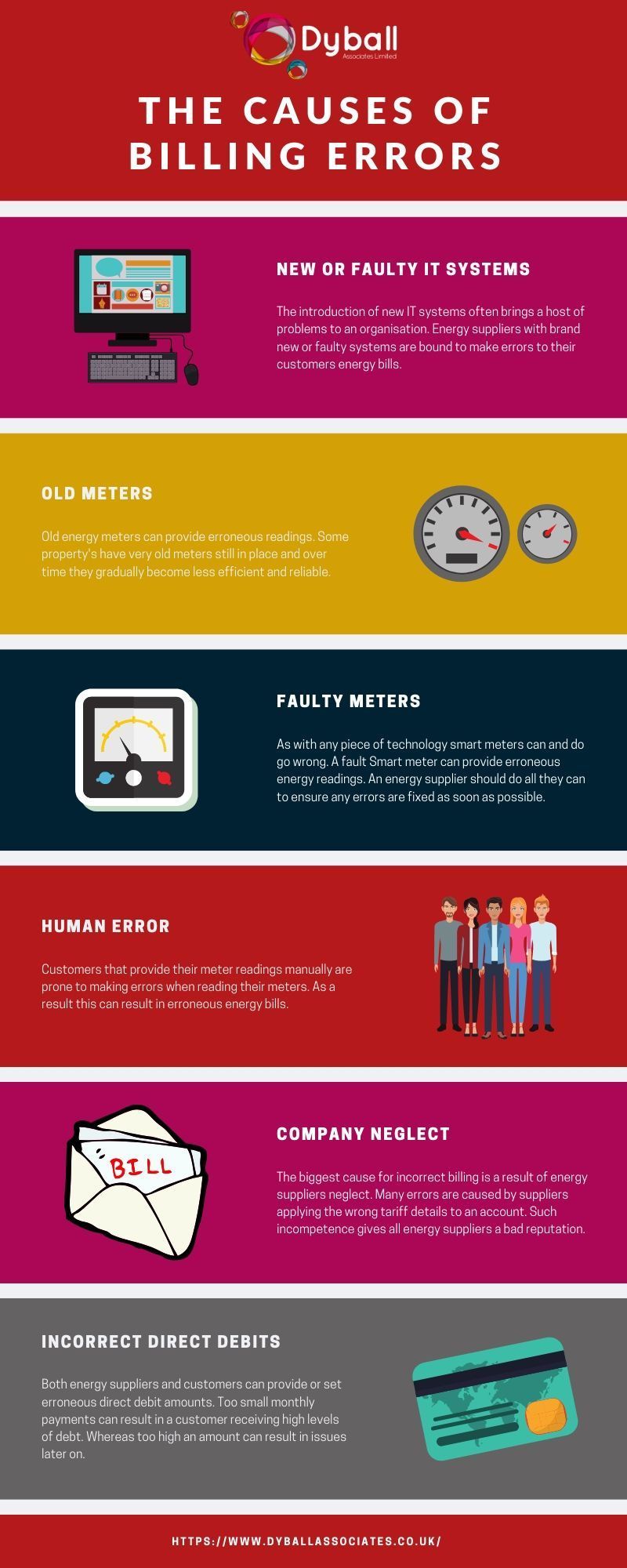Energy Billing – How does it work?
Aside from ensuring that your energy supply company provides excellent customer service the most important thing to get right is the billing process.
When it comes to energy billing there’s more at stake for a supplier than just making income, an energy supplier that regularly gets their billing wrong could see their reputation in tatters.
Getting an Energy Supplier Licence
Before an energy supplier can begin taking on and billing customers, they must attain an energy supply licence .
To get a gas and electricity supply licence they will need to qualify under various codes such as The Master Registration Agreement (administered by MRASCO ), and The Balancing Settlement Code (administered by Elexon ) The Smart Energy Code which requires a supplier to undertake the DCC User Entry process.
These entry requirements are designed to test a new supplier’s knowledge of the sector, their energy industry software to ensure they’re up to scratch and their business and contracts processes.
Once the regulators are satisfied with these, an energy supply licence may be granted. For more information and advice on how to obtain a license visit here
Tariffs
Electricity is sold to consumers via a tariff, a set of prices that are linked to set conditions and terms.
Ofgem has set rules on how an energy supplier must structure their tariffs for customers. For domestic customers, a tariff is made up of a daily charge (standing charge) or a price per unit rate, or both.
There are also Time of Use Tariffs (also known as Economy 7 tariffs) that charge different rates depending on the time of day the energy is used.What the charges cover
A tariff should provide the energy supplier with enough revenue to allow them to cover all their costs. These typically include:
- Wholesale energy costs – the rates paid to energy generators or traders
- Network costs – the cost to use the public networks that transport energy around the country.
- Policy costs – These costs include any levies that are imposed by the government such as environmental schemes. With NetZero targets now in place, these charges are likely to rise.
- Operating costs – The costs incurred by providing services to customers such as providing energy billing, collecting from a customer and the costs of processing energy billing payments.
- Metering costs – The installation and maintenance of smart, prepayment and traditional meters.
- Agent costs – These costs include the expenses generated by sending out employees to read meters as well as data processing and customer services.
Breakdown of an average energy bill
The bills that an energy supplier sends to their customers is made up of several different areas that cover the expenses listed above.
Let’s look at what a typical energy bill is comprised of.
VAT Charges
Domestic customers already pay a reduced VAT rate of 5% on their energy bills.
Businesses, on the other hand, may have to pay as much as 20%, however, they can pay a reduced rate of VAT if they use less than 33-kilowatt hours of electricity or 145kw hours of gas per day. They can also be eligible for a reduced rate if they are a charitable or non-governmental organisation or some of its energy usage is for domestic purposes.
Environmental Costs
A part of a customer’s energy bill is used to subsidise the government’s environmental initiatives and make up around 11% of an electricity bill and 6% of a gas bill. These rates are likely to increase over the next few years as more focus is directed to environmental issues.
Read more: UK’s Renewable Energy Drives Fastest Decarbonisation
·The schemes they subsidise include –
·Carbon Emissions Reduction Targets
·Community Energy Saving Programmes
Transmission and Distribution Charges
Around 2% of a domestic customers gas bill and 4% of their electricity bill make up the cost of transmission charges. Transmission networks are what deliver energy into homes and businesses.
16% of electricity and 16% of gas bills go toward distribution costs such as the building of and maintenance and operation of gas pipes and electricity wires.
Wholesale Energy costs
The largest proportion of an energy bill comes from the charges a customer pays for the energy they use. The wholesale cost is the amount an energy supplier must pay for the energy that they buy and then sell onto the customer. Other costs include those associated with running the energy supply business such as operating call centres and staff wages.
The main causes of Energy Billing Errors
Energy Billing Solutions via a CRM
To make the energy billing process as efficient as possible, energy suppliers should adopt an energy billing software and CRM system . This allows the company to deliver a better customer experience and reduce the chance or errors. The main benefits of a CRM include:
·Minimise the need for manual interaction
·Deliver a seamless customer experience
·Get things right, first time
Dyball Associates Energy Billing Services
Dyball Associates energy supplier CRM system incorporates an energy billing system that allows the scheduling and ad hoc bill production to the suppliers branded billing templates.
Bills can be run via automation through the system and any errors and exceptions are quickly identified and quarantined to be resolved by the billing team.
In short, our CRM helps an energy supply business automate their billing and collection processes.
Further Reading
Electricity Dataflow Management System
Gas Dataflow Management System
Inaccurate billing most common complaint against Energy Suppliers
Add your Customers to the Priority Service Register with Dyball’s CRM
Dyball Associates are proud to help new supply businesses successfully launch in the UK market.
Through our energy market consultancy services, and the energy industry software we’ve developed, we’re supporting new UK electricity and gas suppliers get set up and start supplying.
For more information on how to start and manage an energy company, get in touch with Dyball Associates today.
Follow us on Twitter and LinkedIn to keep up to date with the latest news and updates in the energy industry.





